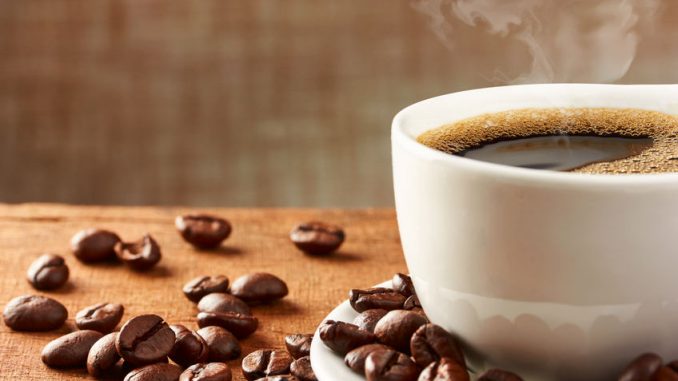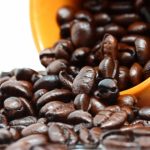
The aroma of coffee in the morning is one of the drivers that gets most of us out of bed and onto work. In fact just the aroma is enough to get people going – they don’t have to drink a drop. The aroma and flavour of coffee is complex and demands some considered research analysis. Product developers wishing to exploit coffee flavour would do well to explore how various processes including roasting and brewing have on both the composition and release of coffee aroma. Having stated that, analysis is difficult and time-consuming.
Coffee Aroma And The Physical Environment
When we think about food aroma generally, it is probably one of the most important characteristics for acceptance of a food product by any consumer. Coffee is no different. The perceived intensity of coffee aroma compounds depends not only on their physical properties such as their chemical and physical nature, their volatility and concentration etc. but also the composition of the food matrix they reside in (Guichard, 2002).
The Role Of Polymers In Coffee Aroma
Coffee contains a number of biopolymers and these all interact in coffee aroma. We have proteins, carbohydrates and lipids as well as smaller biopolymers such as the phenolics. All these polymers will alter the flavour release profile and are often behind the reason for the decrease in the intensity of flavour perception of any aroma as has been examined in with various food matrices (King and Solms, 1982; Andriot et al., 2000; Piraprez et al., 1998; Jouquand et al., 2006).
The Roasting Process And Its Impact on Coffee Aroma
Roasting is one of the essential steps in producing coffee. Roasting conditions have a major impact on the physical and chemical properties of roasted coffee beans, the mode of heat transfer, and the applied temperature profile being the most critical process parameters (Schenker, 2000). The parameters determine the rate of dehydration and the bean temperature and, in turn, set the specific conditions for chemical reactions.
Coffee is roasted close to where it will be consumed. Why? Green beans are more stable in their aroma and flavour profile than roasted beans. It;’s one of the reasons why it is recommended to consume coffee from roasted beans within the month because of the detrimental changes occurring to coffee once it has been roasted.
Roasting methods, as we mentioned before have a significant impact on aroma. There are two types of machines – the drum roaster and the fluid-bed roaster.
The Drum Roaster
In the early 1900s, drum roasting became popular the method for producing roasted coffee beans. It is still extremely popular because craft roasters prefer it as they want to achieve roasting at slower speeds compared to fluid-bed roasting. In this process, a horizontal metal drum is roasted above an open flame containing green coffee beans. The drum constantly moves beans so that an even roasting is obtained. The degree of roasting is controlled by the level of the gas flame, speed of rotation and the flow of air into the system. These factors affect the degree of heating of the beans. Drum roasters can handle very large amounts of beans – some up to a half-metric tonne.
The Fluidized-Bed Roaster
The more modern approach to roasting uses Michael Sivertz’ invention from the 1970s where a fluid-bed roaster rotates whilst jets of hot air heat up the green coffee beans. Roasting times are shorter and the beans swell more rapidly because of the rate of heat transfer. Because of the higher volume of heated air, the roasting process is quicker because heated air can reach the beans more effectively.
Tangential roasters are operated similarly to drum roasters but they rely on shovels inside the roaster to mix the coffee as it is heated up. It means bigger batches can be roasted.
Effect on Aroma
To date, approximately, 800 aroma compounds are created by the roasting process for coffee alone (Clifford, 1985; Flament, 1989; Nijssen et al., 1996; Sanz et al., 2002). This is exceptionally large and that number compares with about 300 to 500 found in the roasting of meats and nuts.
There is one very comprehensive reference on the subject which gives chapter and verse on the subject of coffee flavour and there is very little that isn’t covered in this book (see Flament & Bessiere-Thomas, 2002).
Bagenstoss et al., (2008) have studied the effect of different time-temperature conditions on the kinetics of aroma formation in both types of roasting process except the tangential version. In that study they assessed the changes in 16 different aroma compounds as well as the physical characteristics of the coffee beans. Too much heat in both cases of roasting typically drove off all the aroma compounds except pyridine, dimethyl trisulphide and hexanal.
Model Studies On Coffee
Roast aroma generation is complex because of the many compounds involved in their formation. Better understanding is achieved using model systems where the chemical mechanisms can be teased out. Simplification of the experimentation is important if any understanding of the science is to be achieved.
The mechanisms of aroma formation have been reviewed by Baltes (1979, 1980) at the Institute for Food Chemistry in the Technical University in Berlin, Germany. This team has for many years looked at roast aroma formation by treating just one or two amino-acids with sugars or sugar degradation products under typical food-processing conditions. Generally, a number of studies are available which investigate the heating of specially treated proteins with sugars, amino-acids, fruit acids and lipids. Their studies focussed on the Maillard browning mechanisms which were reviewed a while ago (Baltes, 1982; Namiki, 1988). If however the roasting process rises above 250°C then many newly formed compounds start to break down or follow pyrolytic degradation mechanisms. This latter chemical process produces a different distinctive and characteristic flavour to the coffee.
Baltes and Bochmann with others (1986, 1987a and b) have looked at roasting aromas when they reacted just two amino acids, serine and threonine with sucrose in different amounts as part of the roasting process. The products were analysed using capillary GC-MS (gas chromatography-mass spectroscopy). Even the simplest combination of ingredients produced at least 300 aroma compounds many of which were heterocycles. This leads to an interesting range of chemicals that are often unique and characteristic of the coffee.
One of the key groups of reactions from the Maillard Browning in coffee roasting are now defined. A number of compounds have been identified from this simple reaction including alkyl-, alkenyl-, and acyl-substituted furans, pyrroles, pyrazines, pyridines, oxazoles and nine pyrrolyalkanols.
One reaction combination produced 123 mono- and bicyclic pyrazines of which 12 were furfurylpyrazines which were separated and identified by HRGC/MS (high resolution HR) (Baltes and Bochmann, 1987b). It would seem these aromas form anyway between serine and threonine in the absence of sucrose, save for the furans and oxazoles.
Two very potent earthy smelling compounds identified in roasted coffee were ethenylalkylpyrazines. These were 2-ethenyl-3,5-dimethylpyrazine and 2-ethenyl-3-ethyl-5-methylpyrazine. Their odor threshold values are 0.014ng/l of air (Czerny et al., 1996).
One chemical compound which has a very strong roast coffee aroma is 2-furanmethanethiol (2FM). Ironically, this is a compound often used to characterise certain wines (Tominaga et al., 2000).
Roasting green coffee produced about 160 identifiable compounds, with about one third being constituents in coffee aroma.
Silwar and Lüllmann (1993) commented on the influence of roasting temperature in an investigation with Robusta coffees. Coffee samples were roasted at different temperatures for a constant duration of 5 min, resulting in products of various degrees of roasting. The authors concluded from tasting cups of brewed coffee that aroma formation started at around 170 °C, when a peanut-like roast note could be perceived. At 180 to 190 °C a coffee-like flavor originated, whereas the “real” flavor of roasted coffee only appeared at 220 to 230 °C. Beyond this point, the flavour was judged to be slightly over-roasted (240 °C) and typically over-roasted (250 to 260 °C).
Precursors Of Coffee Aroma
Focus has moved to the precursors found especially in green coffee (De Maria et al., 1994). Water soluble fractions from green coffee were fractionated using high-performance gel filtration. Flavour precursors were isolated from most fractions following ethanol precipitation of each aqueous extract. Green coffee releases arabinogalactan along with proteins, sucrose, trigonelline and chlorogenic acid. Gas chromatographic analysis of each fraction following their roasting showed which fractions contributed to flavour.
The monosaccharides were shown to be vital in the flavour generation. The furans are formed from sucrose degradation and arabinogalactan pyrolysis. Small amounts of pyridine are formed from trigonelline degradation and protein pyrolysis (De Maria et al., 1996). Subsequently the formation of HMF (hydroxymethylfurfural) has been investigated (Steinhauser et al., 1999).
Guaiacol and 2-furfurylthiol may greatly contribute to the aroma of dark-roasted coffees.
References
, , , . (2000) Interactions between methyl ketones and β‐lactoglobulin: sensory analysis, headspace analysis, and mathematical modeling. J. Agric. Food Chem. 48(9) pp. 4246–51(Article)
Baggenstoss, J., Poisson, L., Kaegi, R., Perren, R., & Escher, F. (2008). Coffee roasting and aroma formation: application of different time− temperature conditions. Journal of Agricultural and Food Chemistry, 56(14), pp. 5836-5846.
Baltes, W. (1979). Roestaromen. Deutsche Lebensmittel Rundschau.
Baltes, W. (1982). Chemical changes in food by the Maillard reaction. Food Chem., 9(1), pp. 59-73
Baltes, W., & Bochmann, G. (1986). Model reactions on roast aroma formation. The reaction of serine and threonine with sucrose. Dev. Food Sci., 13, pp. 245-255
Baltes, W., & Bochmann, G. (1987a) Model reactions on roast aroma formation. 1. Reaction of serine and threonine with sucrose under the conditions on coffee roasting and identification of new coffee aroma compounds. J. Agric. Food Chem., 35(3), pp. 340-346 (Article)
Baltes, W., & Bochmann, G. (1987b) Model reaction on roast aroma formation. IV. Mass spectrometric identification of pyrazines from the reaction of serine and threonine with sucrose under the condition of coffee roasting. Zeitschrift für Lebensmittel-Untersuchung und Forschung 184 (6) pp. 485–93
Baltes, W., & Bochmann, G. (1987c) Model reaction on roast aroma formation. III. Mass spectrometric identification of pyrroles from the reaction of serine and threonine with sucrose under the condition of coffee roasting. Zeitschrift für Lebensmittel-Untersuchung und Forschung, 184 pp. 478–84
Bicchi, C.P., Panero, O.M., Pellegrino, G.M., Vanni, A.C. (1997) Characterization of roasted coffee and coffee beverages by solid-phase microextraction-gas chromatography and principal component analysis. J. Agric. Food Chem. 45 pp. 4680–6
Clifford, M. N. (1985) Chemical and physical aspects of green coffee and coffee products. In: Coffee Springer. USA. pp. 305-374
Czerny, M., Wagner, R., & Grosch, W. (1996). Detection of odor-active ethenylalkylpyrazines in roasted coffee. Journal of agricultural and food chemistry, 44(10), pp. 3268-3272. https://pubs.acs.org/doi/abs/10.1021/jf9600824
De Maria, C. A. B., Trugo, L. C., Moreira, R. F. A., & Werneck, C. C. (1994). Composition of green coffee fractions and their contribution to the volatile profile formed during roasting. Food Chem., 50(2), pp. 141-145
De Maria, C. A. B., Trugo, L. C., Neto, F. A., Moreira, R. F. A., & Alviano, C. S. (1996). Composition of green coffee water-soluble fractions and identification of volatiles formed during roasting Food Chem., 55(3), pp. 203-207
Flament, I. (1989) Coffee, cocoa, and tea. Food Rev. Int. 5(3) pp.317-414.
Flament, I. and Bessiere-Thomas, Y. (2002) Coffee Flavor Chemistry. John Wiley & Sons. Chichester, West Sussex. UK.
. (2002) Interactions between flavor compounds and food ingredients and their influence on flavor perception. Food Rev. Int. 18(1) pp. 49–70 https://doi.org/10.1081/FRI-120003417
, . (1982) Interactions of volatile flavor compounds with propyl gallate and other phenols as compared with caffeine. J. Agric. Food Chem. 30(5) pp. 838–40 https://pubs.acs.org/doi/abs/10.1021/jf00113a010
Namiki, M. (1988). Chemistry of Maillard reactions: recent studies on the browning reaction mechanism and the development of antioxidants and mutagens. Adv. Food Res., 32, pp. 115-184
Nijssen, L.M., Visscher, C.A., Maarse, H., Willemsens, L.C., Boelens, M.H., editors. (1996) Volatile compounds in food: Qualitative and quantitative data. 7th ed. Zeist, The Netherlands: TNO Nutrition and Food Research Institute. 321 pp.
P, , . (1998) Flavour retention by lipids measured in a fresh cheese matrix. Food Chem. 61(1–2) pp. 119–25. .
Sanz, C., Czerny, M., Cid, C., Schieberle, P.(2002) Comparison of potent odorants in a filtered coffee brew and in an instant coffee beverage by aroma extract dilution analysis (AEDA). Euro Food Res. Technol. 214 pp. 299–302.
Silwar, R., Lüllmann, C. (1993) Investigation of aroma formation in Robusta coffee during roasting. Café Cacao Thé 37(2) pp. 145-152
Steinhauser, U., Oestreich-Janzen, S., & Baltes, W. (1999). Die Rostkaffee- Flussigextraction zur Herstellung von Loslichem Kaffee in Modelversuch II. Zeitlicher Verlauf des uberganges van Sauren, Kolenhydraten sowie 5-Hydroxymethyl-2-furfural (HMF) in den Flussigextract. Deutsche Lebensmittel-Rundschau, 95(11), pp. 447–453
Tominaga, T., Blanchard, L., Darriet, P., & Dubourdieu, D. (2000). A Powerful Aromatic Volatile Thiol, 2-Furanmethanethiol, Exhibiting Roast Coffee Aroma in Wines Made from Several Vitis v inifera Grape Varieties. J. Agric. Food Chem., 48(5), pp. 1799-1802 https://pubs.acs.org/doi/abs/10.1021/jf990660r


Interesting article.